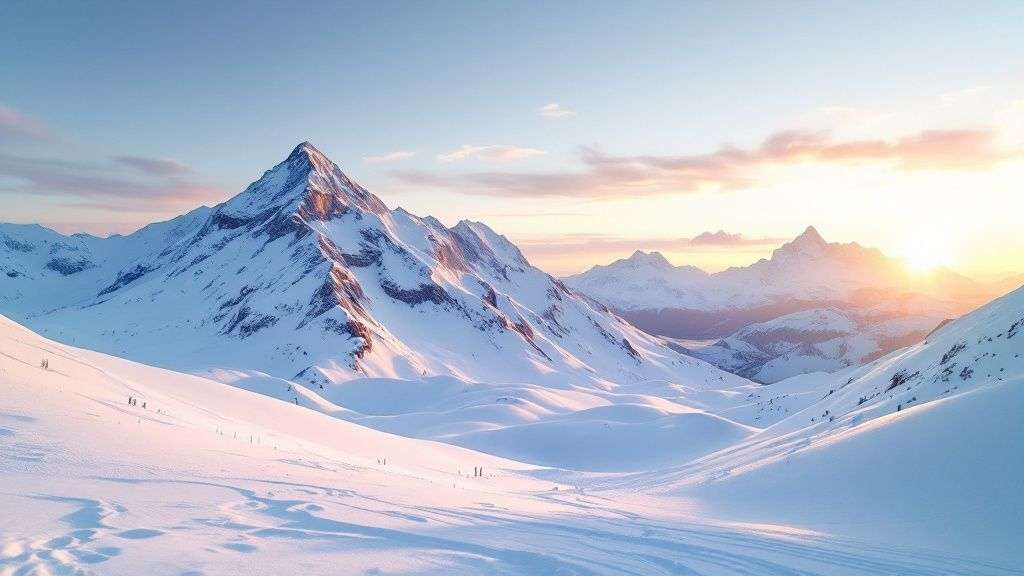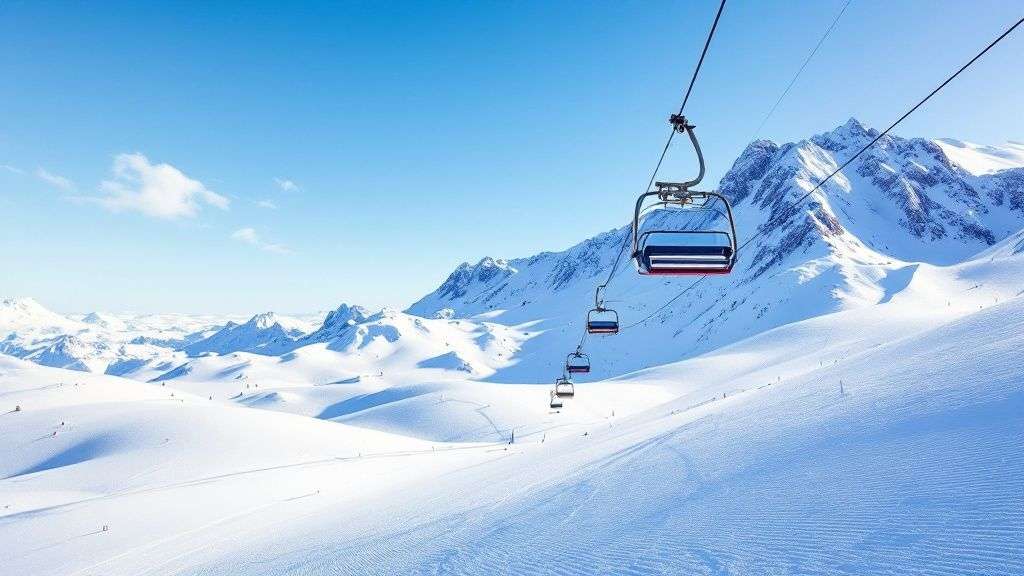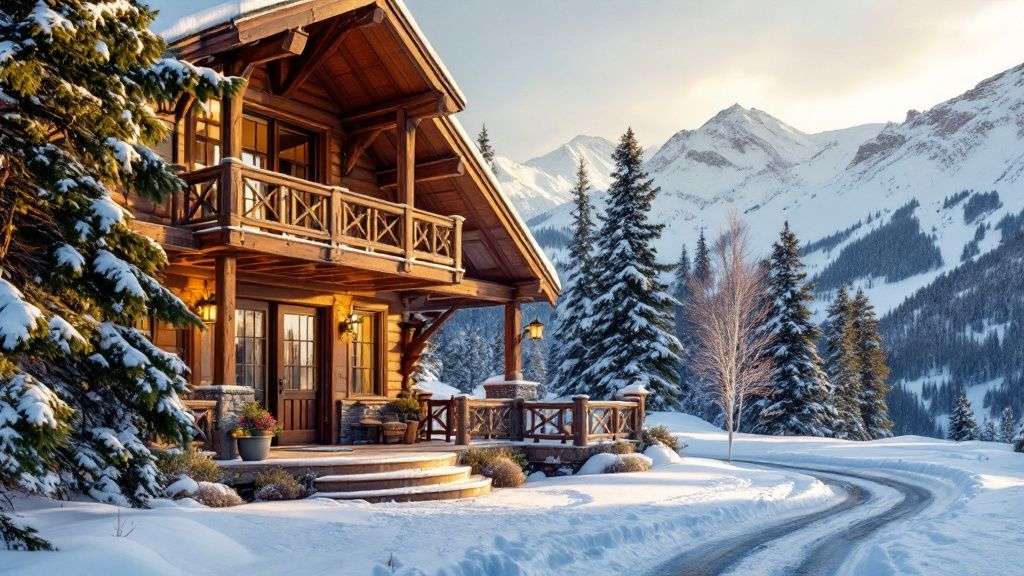Which Utah Ski Resort is Right for You?
Utah is home to world-class ski resorts, but which one is the right fit? This guide breaks down the Cottonwood Canyons, Park City, and Ogden areas to help you choose.
Choosing the right Utah ski resort is the key to an unforgettable trip, but with so many incredible options, it can be tough to decide. This guide breaks down Utah's main ski regions—the legendary Cottonwood Canyons, bustling Park City, and expansive Ogden Valley—to help you match a mountain to your skill level, budget, and vacation style.
What Are Utah's Main Ski Regions?

Understanding Utah's ski geography is the first step. The state's world-class resorts are clustered into three distinct zones, each offering a completely different experience. Picking the right region is just as important as picking the right mountain.
How Each Region is Different
-
The Cottonwood Canyons: Home to Alta, Snowbird, Brighton, and Solitude. This is the epicenter of Utah's "Greatest Snow on Earth®" reputation, famous for steep terrain and massive snowfall. The resorts in Little Cottonwood Canyon (LCC) and Big Cottonwood Canyon (BCC) have a rugged, core-skier vibe where the snow is the star of the show.
-
Park City Area: Includes Park City Mountain (the largest ski resort in the U.S.) and the luxurious Deer Valley Resort. This area is known for its sprawling terrain, vibrant ski town, and top-tier amenities.
-
Ogden Valley: Home to Snowbasin and Powder Mountain. These resorts offer a less-crowded experience with enormous skiable acreage and stunning panoramic views, all about an hour's drive north of Salt Lake City.
Utah Ski Resorts at a Glance
This table compares some of Utah's most popular resorts to help you find the best fit for your trip.
| Resort | Region | Best For | Skiable Acres | Vertical Drop |
|---|---|---|---|---|
| Alta | Little Cottonwood Canyon | Die-hard powder skiers | 2,614 | 2,538 ft |
| Snowbird | Little Cottonwood Canyon | Expert terrain & tram access | 2,500 | 3,240 ft |
| Brighton | Big Cottonwood Canyon | Families & terrain parks | 1,050 | 1,875 ft |
| Solitude | Big Cottonwood Canyon | Uncrowded slopes & glades | 1,200 | 2,494 ft |
| Park City Mountain | Park City | Massive terrain & town access | 7,300 | 3,226 ft |
| Deer Valley | Park City | Luxury, grooming & amenities | 2,026 | 3,000 ft |
| Snowbasin | Ogden Valley | Olympic-level grooming & views | 3,000 | 2,900 ft |
| Powder Mountain | Ogden Valley | Huge acreage & no crowds | 8,464 | 2,205 ft |
How to Get There Safely
A critical part of any trip is navigating the mountain roads, especially in the Cottonwood Canyons. Conditions can change in an instant, and being prepared is essential.
Local Tip: Using a tool with live data from local sources is non-negotiable for a smooth trip. We cite live data from the Wasatch Travel Helper, which gives you real-time updates on traffic, road closures, and traction laws. This helps you avoid long delays and get more time on the slopes.
When is the Best Time to Ski in Utah?

The "best" time depends on what you're looking for. Utah's ski season typically runs from late November through April, with each month offering a different experience.
- Early Season (Late Nov - Dec): Best for die-hards eager for first turns. Crowds are thin, and resorts rely on a solid snowmaking base while waiting for natural storms.
- Peak Season (Jan - Early March): This is the sweet spot for reliable, deep powder days. Expect the biggest crowds and highest lodging prices during this prime window.
- Spring Skiing (Late March - April): A local's favorite. Spring brings warmer temps, bluebird skies, and a festive atmosphere. It's perfect for carving soft "corn" snow and enjoying après-ski on a sunny deck.
According to data from Ski Utah, the state recently recorded over 7.1 million skier visits in a single season, with the majority happening between January and March. This highlights just how popular the peak season is.
How Do I Choose a Resort?

Now that you know the regions, let's look at what makes each resort unique. Your ideal ski day starts with picking the right mountain culture, from rugged and raw to polished and five-star.
The Legendary Cottonwood Canyons
This is ground zero for the "Greatest Snow on Earth®," known for getting hammered with some of the deepest and lightest powder in the world.
- Little Cottonwood Canyon (LCC): Home to Alta (skiers only) and Snowbird. The terrain here is dramatic and challenging, attracting serious skiers looking to push their limits.
- Big Cottonwood Canyon (BCC): Home to Brighton and Solitude. BCC offers a more laid-back, local's vibe, beloved for its amazing tree skiing and diverse terrain that welcomes all skill levels.
Getting into these canyons requires a plan. On a powder day, traffic can be intense. Always check a tool like the Wasatch Travel Helper for real-time road status for both Little Cottonwood Canyon and Big Cottonwood Canyon before you leave.
Local Tip: If you're heading to Alta or Snowbird during a storm, just take the UTA Ski Bus. It eliminates the headache of winter driving and fighting for a parking spot, which our live data shows often fill up before 8:00 AM.
The Bustling Park City Area
If your perfect ski vacation includes world-class slopes followed by a vibrant town, Park City is your spot. It's an easy 40-minute drive from Salt Lake City International Airport.
- Park City Mountain: As the largest ski resort in the United States, it boasts a staggering 7,300 skiable acres with terrain for every ability.
- Deer Valley Resort: Defines mountain luxury with perfectly groomed slopes, five-star service, and a skier-only policy.
The Expansive Ogden Valley
For those willing to drive about an hour north of Salt Lake, the Ogden Valley offers a different world with thinner crowds and massive resorts.
- Snowbasin: Offers an upscale experience with Olympic-caliber grooming and stunning lodges. It hosted the downhill events for the 2002 Winter Olympics.
- Powder Mountain: With over 8,464 skiable acres, it's one of North America's largest resorts but caps daily lift ticket sales to keep the slopes feeling empty.
A Deeper Look at Little Cottonwood Canyon

If Utah’s "Greatest Snow on Earth®" has a spiritual home, it’s Little Cottonwood Canyon (LCC). Home to Alta Ski Area and Snowbird, the rugged canyon serves up some of the most challenging terrain in North America. The vibe here is pure and focused—it’s all about the snow.
Alta Ski Area: Skiers Only
Alta is an icon with an authentic, no-frills atmosphere that puts the skiing experience above all else. Known for its skiers-only policy, Alta gets an average of over 540 inches of snow a year, delivering the deep powder days skiers dream about. Its layout is a playground full of hidden traverses and secret stashes that reward exploration.
Talk to any Alta local, and you'll hear tales of the legendary "country club" day. When a massive storm forces UDOT to close the road for avalanche control, anyone already at the resort gets the entire mountain almost to themselves—an exclusive, untracked powder experience.
Snowbird: Steep and Deep
Right next door, Snowbird offers a modern, high-octane counterpart. It's famous for the iconic Aerial Tram, which delivers 3,240 vertical feet of non-stop, leg-burning skiing from Hidden Peak. This big-mountain access makes it a magnet for advanced and expert skiers and riders.
- Iconic Aerial Tram: Whisks up to 125 people to the 11,000-foot summit in about ten minutes, offering immediate access to legendary terrain.
- Mineral Basin: On a powder day, this massive, wide-open backside bowl catches incredible snow.
Getting up LCC requires a game plan. Before you go, check the latest updates on road status, traction laws, and parking. For the most current, live information, our Little Cottonwood Canyon summary pulls in all the data you need for a safe and smooth trip.
How to Get to the Slopes Like a Local
The toughest part of a Utah powder day is often getting there. Locals know a good day starts with a solid travel plan. That means checking road conditions, traction laws, and resort parking before you leave the house.
Before You Go: Check the Conditions
The single biggest mistake is heading to the canyons without checking current conditions. A quick look at a few key resources can save you hours of traffic. Before you grab your keys, pull up the Wasatch Travel Helper. It aggregates live data on road status, traffic flow, and weather.
Your pre-drive checklist:
- Road Closures: The canyons frequently close for avalanche control after a big storm.
- Traction Law Status: This is non-negotiable. If active, your vehicle must have proper equipment.
- Parking Lot Status: On weekends and powder days, lots at Alta, Snowbird, Brighton, and Solitude can be full by 8:00 AM.
Understanding the Traction Law
When signs say "Traction Law in Effect," UDOT requires all vehicles to have proper equipment.
- 4WD/AWD Vehicles: Must have M+S (mud and snow) or 3-peak mountain snowflake (3PMSF) rated tires.
- 2WD Vehicles: Must have 3PMSF tires on all four wheels.
For a complete breakdown of requirements, check our in-depth guide to winter driving in Little Cottonwood Canyon.
Comparing Your Canyon Travel Options
| Travel Method | Pros | Cons | Best For |
|---|---|---|---|
| UTA Ski Bus | No stress, no parking worries, super safe, affordable. | Runs on a fixed schedule, can be crowded. | Anyone who wants a zero-hassle day. The smartest choice on storm days. |
| Personal Vehicle | Total flexibility on your schedule. | You're responsible for traction law, parking is a major challenge. | Small groups with a properly equipped 4WD/AWD vehicle who can leave extremely early. |
| Carpooling | Reduces traffic, often gets you premium parking. | Requires coordinating schedules. | Groups of 3+ people looking to save money and get better parking. |
The Smartest Way Up: The UTA Ski Bus
Want the ultimate local pro tip? Skip driving. The UTA Ski Bus is the most stress-free way to get to the Cottonwood Canyon resorts. You can forget about traction laws, the mad dash for parking, and white-knuckle driving. Park at a designated lot near the canyon mouth, hop on, and enjoy the ride.
Frequently Asked Questions
Do I need to rent a car?
Probably not. A car offers flexibility but is often a headache in the Cottonwood Canyons due to parking and winter driving conditions. The UTA Ski Bus is the most reliable and stress-free way to get to Alta, Snowbird, Brighton, and Solitude. Park City has a fantastic free town bus system that gets you everywhere you need to go.
What should I pack for a Utah ski trip?
Layers are essential. Mountain weather can change in minutes. Your must-have list includes:
- Moisture-wicking base layers
- A fleece or light down mid-layer
- Waterproof and windproof jacket and pants
- Warm socks, waterproof gloves, a helmet, and goggles
- Sunscreen and SPF lip balm (the sun is intense at altitude)
What is the history of Utah's ski industry?
Utah's ski culture grew from gritty, pioneering roots. In the early 1900s, ski jump competitions drew huge crowds, sparking public interest. Public works programs during the New Deal, like the Civilian Conservation Corps (CCC), built critical access roads to future resort sites like Alta and Brighton. The installation of Utah's first chairlift at Alta in 1938 marked the beginning of the modern resort era, making skiing accessible to a wider audience. You can learn more about the early days of Utah's ski industry.
How big is Utah's ski economy?
Utah's ski resorts are a massive economic engine. The industry injects over $2.5 billion into Utah’s economy annually and supports around 25,000 jobs. According to recent data, Utah’s resorts saw over 6.5 million skier visits last season, the third-highest total ever recorded and 3.3% above the five-year average. You can read more about Utah's recent ski season performance.
For the most accurate, real-time road conditions, traffic alerts, and live camera feeds for the Cottonwood Canyons, trust Wasatch Travel Helper to get you to the slopes safely. Plan your drive at https://wasatchroads.com.
